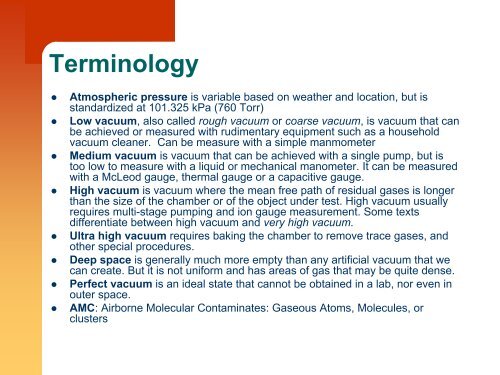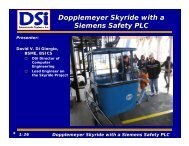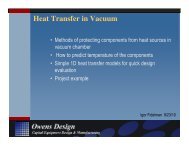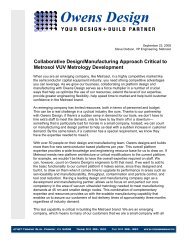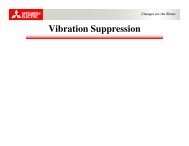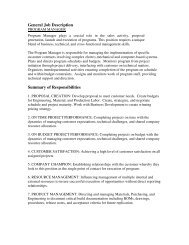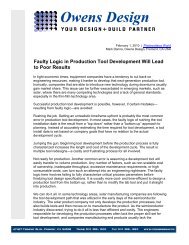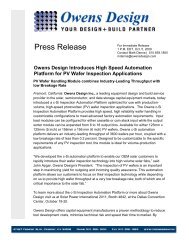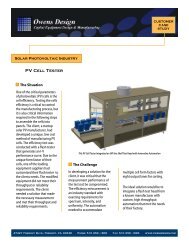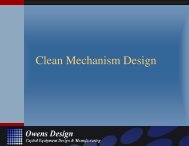Vacuum Design Constraints and Considerations - Owens Design
Vacuum Design Constraints and Considerations - Owens Design
Vacuum Design Constraints and Considerations - Owens Design
Create successful ePaper yourself
Turn your PDF publications into a flip-book with our unique Google optimized e-Paper software.
Terminology<br />
• Atmospheric pressure is variable based on weather <strong>and</strong> location, but is<br />
st<strong>and</strong>ardized at 101.325 kPa (760 Torr)<br />
• Low vacuum, also called rough vacuum or coarse vacuum, is vacuum that can<br />
be achieved or measured with rudimentary equipment such as a household<br />
vacuum cleaner. Can be measure with a simple manmometer<br />
• Medium vacuum is vacuum that can be achieved with a single pump, but is<br />
too low to measure with a liquid or mechanical manometer. It can be measured<br />
with a McLeod gauge, thermal gauge or a capacitive gauge.<br />
• High vacuum is vacuum where the mean free path of residual gases is longer<br />
than the size of the chamber or of the object under test. High vacuum usually<br />
requires multi-stage pumping <strong>and</strong> ion gauge measurement. Some texts<br />
differentiate between high vacuum <strong>and</strong> very high vacuum.<br />
• Ultra high vacuum requires baking the chamber to remove trace gases, <strong>and</strong><br />
other special procedures.<br />
• Deep space is generally much more empty than any artificial vacuum that we<br />
can create. But it is not uniform <strong>and</strong> has areas of gas that may be quite dense.<br />
• Perfect vacuum is an ideal state that cannot be obtained in a lab, nor even in<br />
outer space.<br />
• AMC: Airborne Molecular Contaminates: Gaseous Atoms, Molecules, or<br />
clusters


